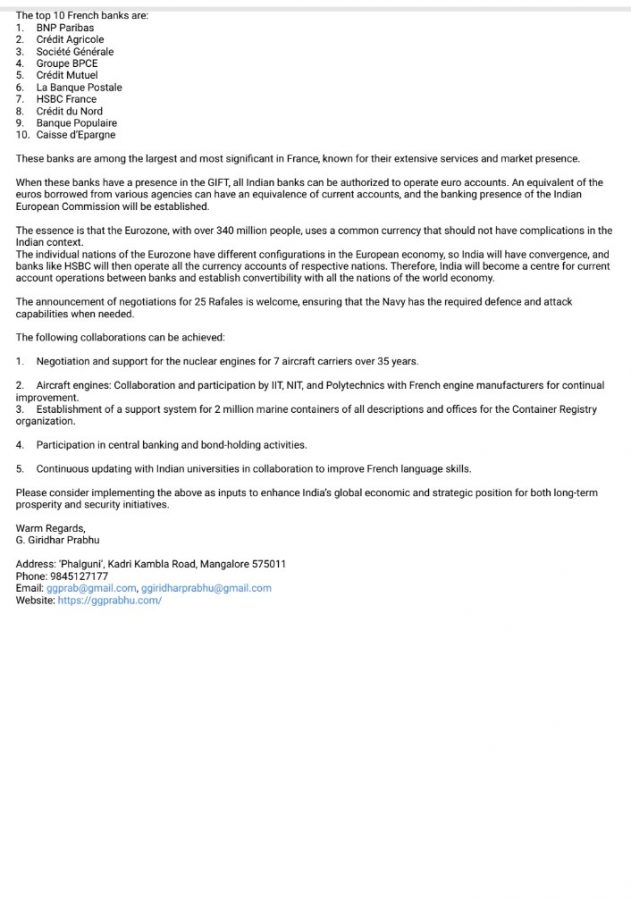India Brings Back 102 Tonnes of Gold From Bank of England on Dhanteras in a Move Toward Economic Sovereignty
Announced on Dhanteras, this decision marks a significant step in securing India’s national wealth domestically.
Proposal to Relocate Gold Reserves to India Gains Approval:
Earlier suggestions to the Prime Minister’s Office advocated for storing India’s gold within the country, including at the Rashtrapati Bhavan.
A Symbol of National Pride and Heritage:
Repatriating the gold symbolizes India’s dignity and economic independence, showcasing forward-thinking governance.
Building a Strong Foundation for Financial Independence:
Bringing reserves back to India reinforces the nation’s commitment to economic self-reliance and sovereignty.
Safeguarding National Assets and Empowering the Indian Economy:
This move supports the vision to strengthen the Indian Rupee’s status globally while ensuring prosperity and security for future generations.


A Global Currency Initiative for the Indian Rupee
The Reserve Bank of India (RBI) currently maintains a USD 50 billion swap arrangement with the Bank of Japan, overseen by Deputy Governor Shyamala Gopinath. With the Japanese yen depreciating by 45% against the USD to a current rate of 154 yen, there is a timely opportunity to consider a Rupee-Yen arrangement that could provide significant economic advantages for India. This calls for a well-structured, long-term mechanism with Japan to support the growth and prosperity of both nations over the next 30 years.
1. Repatriation of Gold Reserves
India’s gold reserves should be transferred from the Bank of England in London to a secure facility within Rashtrapati Bhavan in India. Guarded by the elite Presidential security, this relocation would symbolize national wealth and ensure dignified stewardship. With high security in place, the public could view the gold holdings for a nominal fee, alongside a rotating exhibit of valuable state-owned jewelry or items lent by private collectors, adding a cultural dimension to this initiative.
2. International Circulation of the Indian Rupee
The Government of India and the RBI should collaborate to print Rs 1,000 notes in Japan for international use. These notes would be distributed by Japanese banks in global financial hubs, backed initially by the Yen, to encourage Rupee circulation worldwide. In India, the notes would be honored but kept from being introduced as additional currency to control inflation. Foreign nationals and Indian citizens traveling to and from India could carry up to Rs 50,000 per person, subject to standard customs declarations.
3. Rupee Seigniorage and Investment
This initiative would allow the RBI to benefit from seigniorage, creating Rupee funds available for investment within India and abroad, thereby advancing the Rupee as a convertible currency. Indian embassies, consulates, and expatriates should be able to exchange this currency globally at banks and currency exchange counters.
4. Digital Rupee Expansion
A digital equivalent of the Rupee should be made available by the RBI to facilitate international transactions, complementing the existing digital Rupee platform.
5. Convertibility for Investors
Convertibility of the Rupee should be ensured for both domestic and international investors, bolstering its appeal as a currency for global commerce and investment.
6. Strengthening Defense with Nuclear-Powered Aircraft Carriers
India should invest in nuclear-powered aircraft carriers (81,000 to 90,000 metric tons) equipped with Rafale jets to secure its strategic interests for the next 70 years.
7. Prepayment of World Bank Loans
India should aim to prepay its loans to the World Bank, working toward independence from future borrowing from the World Bank or IMF. A structured plan for repayment should be implemented by the next administration.
8. Investment in World Bank Bonds
Indian banks should be encouraged to invest USD 70 billion in World Bank bonds. This bond investment could provide influence in global financial structures and potentially facilitate rescheduling of loans for other debtor nations, benefiting about 80 countries.
9. Expansion of the Indian Foreign and Trade Services
The Indian Foreign Service, Consular Services, and Indian Trade Service should be strengthened, with the UPSC tasked to recruit Junior and Senior Foreign Officers, as well as Trade Officers, on 10-year Short Service Commissions.
10. Introduction of Rs 300 and Rs 400 Notes
The Government of India and the RBI should explore issuing Rs 300 and Rs 400 notes, accompanied by relevant national symbols, to enhance the Rupee’s utility and appeal.
In partnership with the top 10 French banks, including BNP Paribas, Crédit Agricole, and Société Générale, the establishment of a significant banking presence in India’s GIFT City can help Indian banks manage Euro accounts, thereby facilitating current account operations with Europe. This would foster a seamless connection with the Eurozone’s extensive economy and allow banks like HSBC to manage multicurrency accounts for various European nations, reinforcing India’s financial connectivity on a global scale.
Additional Strategic Collaborations:
1. Defense Collaboration – Support for nuclear-powered engines for seven aircraft carriers over 35 years is critical for India’s maritime strength.
2. Aerospace Technology Development – Indian institutions like IITs, NITs, and Polytechnics should collaborate with French engine manufacturers for advancements in aircraft engine technology.
3. Maritime Logistics – Establish a support framework for a registry of approximately 2 million marine containers, ensuring infrastructure for global logistics.
4. Central Banking and Bonds – Participation in global central banking and bond-holding activities will integrate India further into international financial markets.
5. French Language Training – Partnerships between Indian universities and French institutions for enhanced French language training can strengthen cross-cultural and economic ties.
These measures represent a comprehensive approach to positioning the Rupee as a globally accepted currency, while bolstering India’s strategic, economic, and defense capacities for long-term stability and growth.